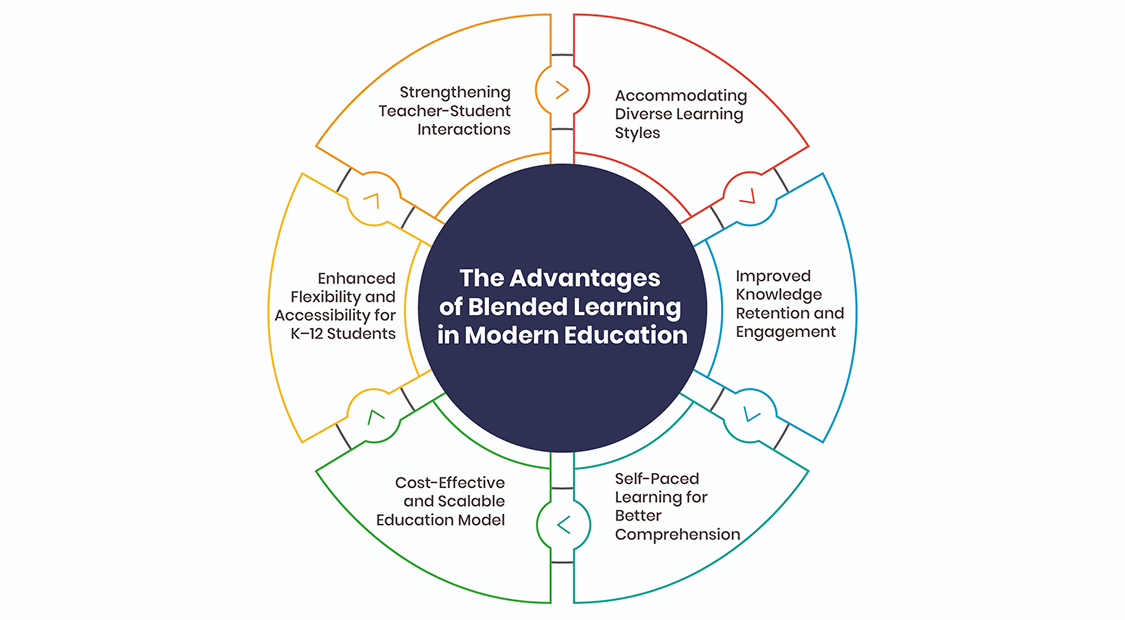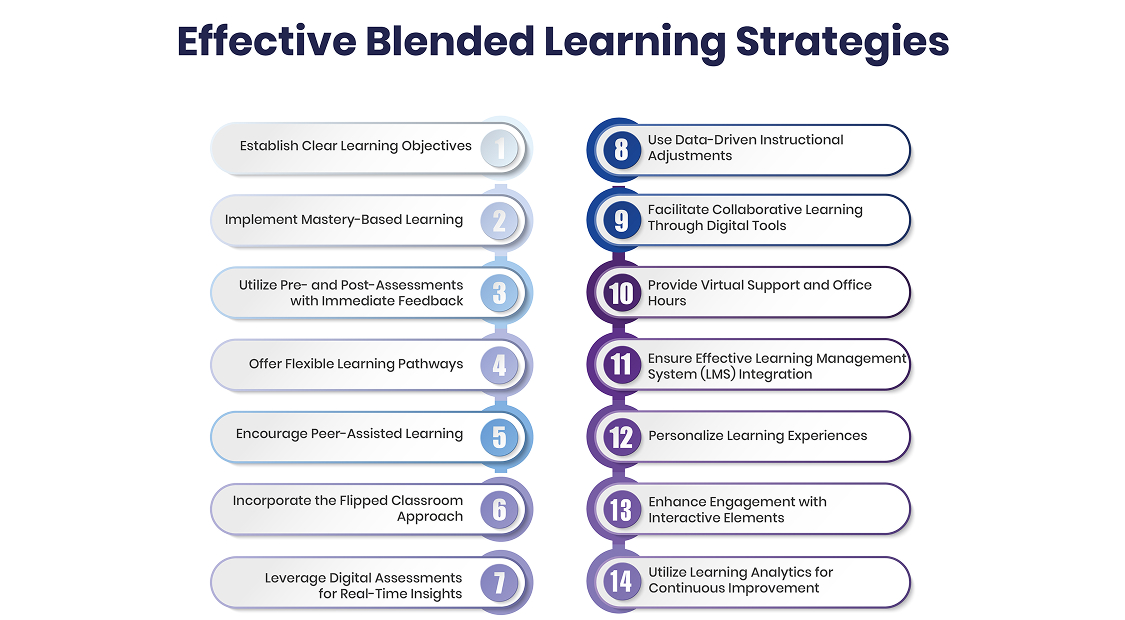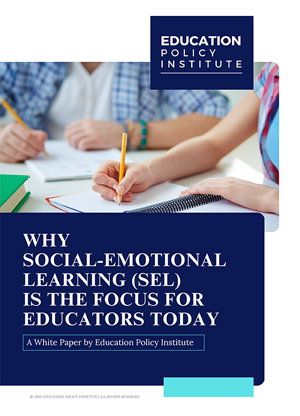Blended learning is a structured educational approach that integrates both traditional classroom instruction and digital learning tools, providing students with greater flexibility and control over their learning experience. This method allows students to engage with content at their own pace while still benefiting from teacher guidance in a physical classroom setting. A well-designed blended learning environment is built upon core pillars such as data-driven instruction, personalized learning, student autonomy, and academic rigor. These elements work together to create a cohesive and engaging learning experience that enhances knowledge retention and skill development. However, successful implementation requires careful planning, ensuring that instructional strategies align with learning objectives and that students possess the necessary foundational skills to navigate the blended model effectively.
With advancements in technology and increasing digital integration in education, blended learning is gaining momentum across K-12 classrooms. The approach leverages interactive tools such as computers, tablets, and online platforms to enhance traditional teaching methods, making learning more engaging and accessible. This hybrid model cultivates a dynamic learning environment where in-person lessons encourage collaboration, while digital resources allow for self-paced study. The demand for blended learning continues to grow, driven by its ability to improve student outcomes and its adaptability to diverse learning needs. As the education landscape evolves, maintaining a balance between quality digital content and effective classroom instruction will be crucial in ensuring that blended learning reaches its full potential.
Blended Learning: Integrating Traditional and Digital Education
Blended learning, or hybrid learning, combines traditional classroom instruction with digital resources to create a flexible and personalized learning experience. This approach empowers students to control aspects such as time, place, path, and pace, catering to diverse learning needs. Digital tools allow learners to access course materials at their convenience, reinforcing their understanding through self-paced study. Online assessments provide immediate feedback, helping them identify areas for improvement. For educators, blended learning enables data-driven instruction, allowing them to arrange teaching strategies based on student performance and needs.
Different models enhance the effectiveness of blended learning. The Station Rotation model, commonly used in elementary schools, has students rotate through various learning stations, including at least one focused on online learning. The Flipped Classroom model, meanwhile, encourages students to engage with instructional content online before attending in-person sessions, where they apply their knowledge through discussions and activities. Implementing blended learning effectively requires clear learning objectives, digital literacy support, and seamless technology integration. Educators must adapt instructional methods to leverage both traditional and digital tools, creating an engaging and adaptable learning environment that meets the evolving demands of modern education.
The Advantages of Blended Learning in Modern Education
Blended learning combines traditional instruction with digital methods, offering flexibility and enhanced engagement. It improves learning outcomes through diverse teaching approaches.

-
Accommodating Diverse Learning Styles
Blended learning incorporates various instructional methods, such as visual presentations, discussions, written materials, and hands-on activities, to cater to different learning preferences. Some learners grasp concepts better through reading or self-paced videos, while others benefit from collaboration or practical applications. By integrating multiple formats, this approach ensures a more inclusive and effective learning experience. -
Improved Knowledge Retention and Engagement
Engagement is key to effective learning, and combining different instructional strategies enhances retention. A mix of classroom discussions, online modules, and interactive exercises helps learners absorb information more effectively. This approach encourages active participation, making learning more dynamic and immersive. -
Self-Paced Learning for Better Comprehension
Blended learning allows individuals to learn at their own pace, unlike traditional fixed schedules. This flexibility benefits those balancing multiple commitments, such as professionals managing work and training. Learners can revisit complex topics, skip familiar ones, and allocate time based on their needs, leading to a more personalized learning experience. -
Cost-Effective and Scalable Education Model
By integrating digital platforms, blended learning reduces costs related to instructor-led training, travel, and materials. It enables global accessibility and allows organizations to efficiently upskill individuals across different locations through scalable modular learning structures. -
Enhanced Flexibility and Accessibility for K–12 Students
Blended learning provides flexibility by offering online materials like interactive lessons, video lectures, and e-books. Students can access content anytime, allowing slow learners to review concepts and advanced learners to explore beyond the curriculum. Gamified learning and multimedia tools enhance engagement, making education more interactive. -
Strengthening Teacher-Student Interactions
Digital tools facilitate continuous communication between students and educators through online forums, virtual classrooms, and real-time messaging. These platforms provide opportunities for feedback and discussion beyond class hours, while in-person sessions help resolve doubts and maintain meaningful interactions.
Effective Strategies for Blended Learning
By implementing effective strategies in blended learning, educators can enhance student participation, personalize learning, and improve overall academic outcomes. Here are few core strategies to take note of:

-
1. Establish Clear Learning Objectives
Defining precise learning goals ensures that students remain focused and motivated. Educators can facilitate this by setting specific, measurable, achievable, relevant, and time-bound (SMART) objectives, regularly reviewing progress, and providing constructive feedback. -
2. Implement Mastery-Based Learning
Tracking student progress based on skill mastery allows for personalized learning pathways. Visual progress charts and targeted support help learners address their areas of improvement effectively. -
3. Utilize Pre- and Post-Assessments with Immediate Feedback
Pre-assessments provide insight into students’ prior knowledge, while post-assessments measure learning outcomes. Offering real-time feedback enables students to identify and rectify knowledge gaps promptly. -
4. Offer Flexible Learning Pathways
Providing students with multiple ways to engage with content—such as choice boards and interactive assignments—ensures that diverse learning styles are accommodated while maintaining alignment with learning objectives. -
5. Encourage Peer-Assisted Learning
Facilitating structured peer interactions through tutoring and group discussions enhances knowledge retention and promotes collaboration. This approach also helps students develop communication and critical-thinking skills. -
6. Incorporate the Flipped Classroom Approach
In a flipped learning model, students engage with instructional material before class, enabling deeper discussions and practical applications during in-person sessions. This method helps in active learning and critical engagement with content. -
7. Leverage Digital Assessments for Real-Time Insights
Online assessments provide instant feedback, allowing students to track their progress efficiently. Learning Management Systems (LMS) play a key role in data-driven instruction and effective performance monitoring in modern education. -
8. Use Data-Driven Instructional Adjustments
Analyzing performance data from digital assessments and online learning activities helps educators identify learning gaps and refine instructional strategies for better student outcomes. -
9. Facilitate Collaborative Learning Through Digital Tools
Integrating digital tools for collaboration enhances teamwork and creativity in group projects. These resources support real-time interaction, enabling students to share ideas and produce high-quality work. -
10. Provide Virtual Support and Office Hours
Offering virtual consultations through video conferencing or chat platforms allows students to seek clarification and receive additional academic support beyond traditional classroom hours. -
11. Ensure Effective Learning Management System (LMS) Integration
A well-structured LMS centralizes resources, assignments, and communication, enhancing the efficiency of blended learning. Numerous online platforms streamline course management and student engagement. -
12. Personalize Learning Experiences
Adaptive learning technologies develop content based on student performance, creating a customized learning experience that supports diverse educational needs and learning paces. -
13. Enhance Engagement with Interactive Elements
Incorporating videos, simulations, and gamified quizzes enriches learning experiences. Discussion forums and collaborative digital spaces encourage active participation and meaningful interactions. -
14. Utilize Learning Analytics for Continuous Improvement
Leveraging data analytics allows educators to monitor student progress and refine instructional methods. Early identification of struggling students ensures timely intervention and support.
Conclusion
Blended learning transforms education by combining traditional and digital methods to create a flexible, engaging, and student-centered experience. By incorporating technology, data-driven insights, and adaptive strategies, educators can enhance learning outcomes while catering to diverse needs. A well-structured blended model not only improves knowledge retention but also nurtures collaboration, critical thinking, and personalized growth. As education continues to evolve, the key to success lies in maintaining a balanced integration of instructional approaches, ensuring that students receive both the guidance of in-person teaching and the benefits of digital innovation.





